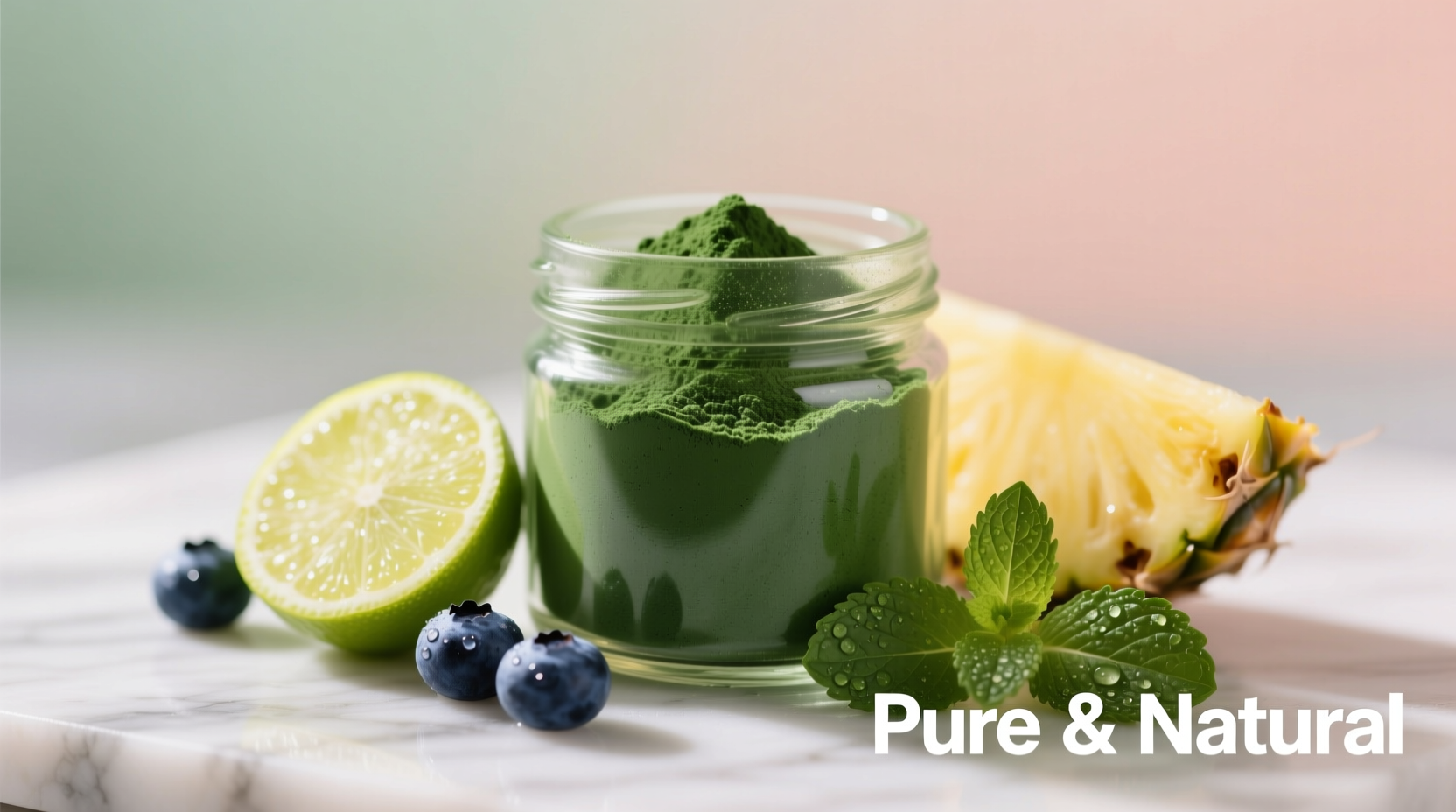Ever wondered what makes spirulina both beloved by health enthusiasts and challenging for first-time tasters? This nutrient-dense superfood delivers exceptional health benefits, but its unique flavor profile can be polarizing. Understanding exactly what does spirulina taste like helps you prepare for your first experience and discover effective ways to incorporate it into your diet without compromising on flavor.
Your First Spirulina Experience: What to Expect
When you take your first sip of spirulina powder mixed in water, you'll immediately notice its intense blue-green color—nature's signal of its chlorophyll richness. The initial taste sensation is predominantly earthy and vegetal, reminiscent of ocean water or fresh seaweed. Many describe it as having a grassy, spinach-like quality with underlying mineral notes that reflect its rich nutrient composition.
The aftertaste often carries a slight bitterness and what some perceive as a metallic or fishy undertone. This isn't random—spirulina naturally contains high levels of iron and other minerals that contribute to this distinctive profile. Interestingly, taste perception varies significantly based on individual sensitivity to bitter compounds and previous exposure to algae-based foods.
Why Spirulina Tastes the Way It Does: The Science Behind the Flavor
Spirulina's unique flavor profile stems directly from its biological composition. As a type of cyanobacteria (blue-green algae), it contains:
- Chlorophyll - responsible for the grassy, green notes
- Phycocyanin - the blue pigment with subtle earthy characteristics
- High mineral content - particularly iron and magnesium contributing to mineral notes
- Essential fatty acids - adding subtle oceanic qualities
According to research published in the Journal of Food Science and Technology, the specific growing conditions significantly impact spirulina's flavor compounds. Spirulina cultivated in optimal mineral-rich environments develops a more balanced flavor profile compared to specimens grown in less ideal conditions, which can amplify the fishy or bitter notes.
| Spirulina Form | Taste Profile | Intensity Level | Best Consumption Method |
|---|---|---|---|
| Powder (pure) | Strong seaweed, mineral-rich, slightly bitter | High | Mixed in fruit smoothies |
| Capsules/Tablets | Minimal taste (swallowed) | Low | With water, no mixing needed |
| Fresh Spirulina | Cleaner, milder oceanic flavor | Medium | Added to salads or dressings |
| Flavored Blends | Masked with fruit or chocolate | Variable | As directed by product |
Factors That Influence Spirulina's Taste Experience
Several elements affect what spirulina tastes like when you consume it:
Quality and Source
High-quality spirulina from controlled environments typically has a cleaner, less fishy taste than lower-grade products. The FDA monitors spirulina production standards through its Nutritional Science and Dietary Supplements program, which helps ensure consistent quality that impacts flavor.
Processing Method
Spray-dried powder often retains more of the natural flavor compared to tablet forms where binders can mask some taste elements. Freeze-dried spirulina tends to preserve more of the original flavor profile.
Personal Taste Sensitivity
Genetic factors influence how strongly you perceive bitter compounds. Those with higher sensitivity to bitter tastes (supertasters) may find spirulina more challenging initially than others.

Practical Strategies for Enjoying Spirulina Despite the Taste
Understanding what does spirulina taste like is only half the battle—knowing how to work with its flavor makes all the difference. Here are proven techniques from culinary professionals:
Effective Flavor Pairings
Certain ingredients naturally counterbalance spirulina's earthy notes:
- Tropical fruits - pineapple and mango's sweetness masks bitterness
- Lemon or lime juice - citrus cuts through mineral notes
- Strong spices - ginger or cinnamon distracts from seaweed flavor
- Dark chocolate - complements rather than fights the earthiness
Optimal Mixing Ratios
Start with small amounts: 1/2 teaspoon of powder in 8-12 ounces of liquid. Gradually increase as your palate adjusts. The ideal ratio for beginners is 1 part spirulina to 4 parts strongly flavored liquid (like tart cherry juice or coconut water).
Temperature Matters
Cold temperatures reduce taste intensity. Always mix spirulina into chilled liquids or add it to frozen smoothie ingredients rather than warm beverages where the flavor becomes more pronounced.
How Your Perception Changes Over Time
Most people experience taste adaptation with repeated exposure to spirulina. What initially seems overpowering often becomes more acceptable within 2-3 weeks of regular consumption. This phenomenon, documented in Food Quality and Preference journal studies, occurs as your brain begins associating the flavor with positive health outcomes.
Many regular users report that after consistent consumption, they actually begin to appreciate spirulina's natural flavor and notice when lower-quality products have stronger fishy notes. This developing taste preference follows the same pattern seen with other acquired tastes like coffee, olives, or blue cheese.
Practical Tips for First-Time Spirulina Users
Make your introduction to spirulina as pleasant as possible with these professional recommendations:
- Begin with capsules if you're particularly sensitive to taste
- Try spirulina in the morning when your palate is fresh
- Avoid consuming on an empty stomach to minimize aftertaste
- Rinse with lemon water afterward to refresh your palate
- Track your experience—most find it more palatable by the third attempt
Remember that what spirulina tastes like isn't fixed—it evolves based on preparation, quality, and your own developing taste preferences. With the right approach, you can enjoy this nutritional powerhouse without compromising on flavor experience.











 浙公网安备
33010002000092号
浙公网安备
33010002000092号 浙B2-20120091-4
浙B2-20120091-4